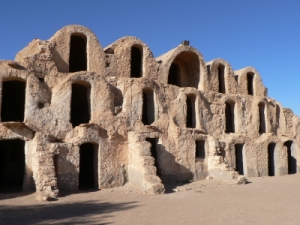In search of sun, surf and sand is a fairly easy task, but it is possible to mix the insulation in the mix, too? Our editors say “the coast”! We get secret arsenal of the sands to present our best choices for U.S. beaches isolated, where quiet coasts invite in the know-swimmers to enjoy the relative solitude. Of course, some of these destinations are far away (some even require outside travel to the islands), but some of the most secluded beaches just below the nose swimmers “, popular in places like California, Florida, U.S. and Hawaii. You just have to plan a visit soon – while these semi-private arenas are unknown at this time, the cat is officially out of the bag. Take a look at our resumes with our Top Secluded Beach Vacations.
Tunisian dinar
June 8, 2009 — tunisiatravelThe dinar (Arabic: دينار, ISO 4217 currency code: TND) is the currency of Tunisia. It is subdivided into 1000 milim (مليم). The abbreviation DT is often used in Tunisia, although writing “dinar” after the amount is also acceptable (TND is less colloquial, and tends to be used more in financial circles); the abbreviation TD is also mentioned in a few places, but is less frequently used, given the common use of the French language in Tunisia, and the French derivation of DT (i.e., Dinar tunisien).
Languages
May 20, 2009 — tunisiatravelTunisia has a very diverse population of people coming from all around the world. Though the majority ethnic groups are Arab/Berber (98%) following European (1%) and Jewish (1%). The most spoken language is Arabic, but the dialect is Tunisian Arabic. Other minor languages include French, and Shilha. Lingua Franca and Sened are languages that are not spoken anymore.
Safakis
January 28, 2009 — tunisiatravellocated
December 8, 2008 — tunisiatravelLocation
November 13, 2008 — tunisiatravelTunisia is located in North Africa and occupies an area half the size of Poland. Tunisian coast in the north and east of the Mediterranean Sea flows. North country is mountainous and densely forested. The further south, terrain changes in an increasingly flat and dry until the top sail sheets (salt lakes, usually dry) designating the beginning of the Sahrawi.
Geography
October 8, 2008 — tunisiatravelFrench Rule
August 22, 2008 — tunisiatravelIn the mid-1800s, Tunisia’s government under the rule of the Bey severely compromised its legitimacy by making several controversial financial decisions that led to its downfall. France began plans to take control of Tunisia when the Bey first borrowed large sums of money in an attempt to Westernize. This failing state facilitated the Algerian raids that occurred thereafter. The weakened Bey was powerless against these raids and unable to resist European colonization.

In 1878, a secret deal was made between the United Kingdom and France that decided the fate of the North African country. Provided that the French accepted British control of Cyprus, recently given to the United Kingdom, the British would in turn accept French control of Tunisia. This satisfied the French and led to their assumption of control in 1880, anticipating the Italians. Tunisia was formally made a French protectorate on May 12, 1881.
Bardo Museum
June 18, 2008 — tunisiatravelTunisia’s top museum is the Bardo Museum. This magnificent, must-see collection provides a taste of ancient life, housed in a glorious palace. The many incredibly well-preserved mosaics, with their images of gods feasting and farming, are stunning, and include some of Africa’s oldest. The most precious of Bulla Regia’s mosaics can be found here.
When to Go
May 13, 2008 — tunisiatravelLow season in Tunisia is from January to February, when hotel rates are down and the weather’s cool and rainy. During the sweaty high season, from June to August, expect hotel rates to be up, car rentals to be scarce and the markets and museums to teem with foreign visitors. This is when the coastal towns are at their liveliest. It’s also when the Tunisian tourist authorities kick into action with a number of superb festivals in old Roman sites.
If your holidays fall at the right time and you’re travelling independently, one of the best times to visit is between mid-March and mid-May when the spring days are pleasantly warm and the countryside is at its prettiest after the winter rains. November is the best time for visiting the Saharan south – longer expeditions deep into the desert are possible, the date harvest (which produces some of the best dates in the world) has just finished, prices are generally cheaper and Douz and Tozeur host back-to-back desert festivals.
